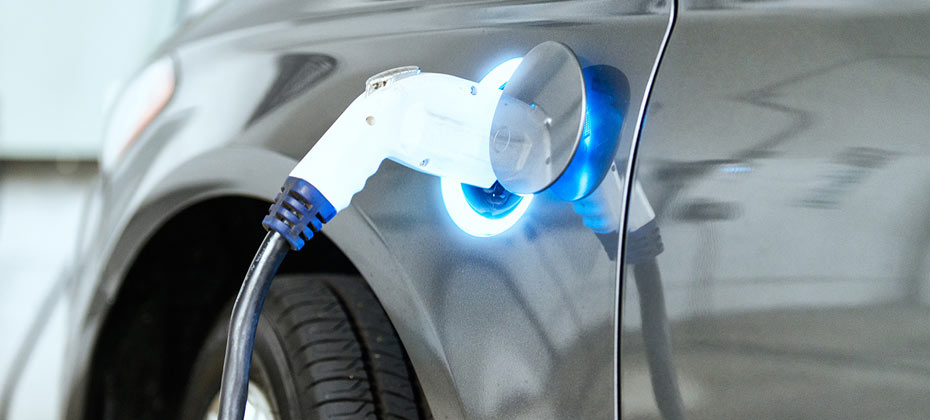Tag: automotive

Consumers are taking advantage of new car incentives, low interest rates and longer-term loans in order to ensure that their vehicle purchase is manageable.

Staying ahead of the trends and adjusting will support sales growth, while also supporting consumers as they begin to recover from the impact of COVID-19.

As subprime originations decrease, some think that subprime consumers are being locked out of the automotive finance market, but that’s not the whole story.

The early assessment for the automotive industry is that despite significant challenges at the onset of the pandemic, the industry continues to rebound.

Consumer sentiment can help automotive marketers create a more human connection with consumers.

Experian recently released its Q1 2020 Market Trends report, which provides insights about the vehicles on the road and the most popular vehicle segments.

Origination data from April and May provide some insight into the more immediate effects of the pandemic on the automotive industry.

In Q1 2020, 30-day delinquencies decreased from 1.98 percent in Q1 2019 to 1.93 percent, while 60-day delinquencies dropped from 0.68 percent to 0.67.

Including vehicle history reports in online vehicle listings create a more complete picture of the vehicle a consumer is looking at online.

Amid the fallout of COVID-19, I often find myself thinking about the impact the pandemic has had and will have on businesses in the coming months—particularly those within the automotive industry. The impact has reached all facets of the industry, leaving dealerships to take unprecedented action. Some have temporarily closed, while many have shifted business priorities to focus on maintenance and repair. Like everyone, we in the automotive industry are concerned about the health and safety of our family, friends and communities. Much like the rest of small business owners, those that oversee dealerships are also concerned about the wellbeing of their work families. The automotive industry is a pillar of our economy, and dealerships are staples within our local communities. Experian has an unwavering commitment to help the industry navigate these uncertain times and address challenges as they arise. The pandemic has impacted groups of people differently and at different times. It’s important for those within the automotive industry to understand how consumer sentiment and priorities will shift over the coming months, in order to address their most pressing needs. As such, Experian launched a daily survey of the general population to gain insight into shifting consumer sentiment as a result of the pandemic. The survey reveals how consumers are dealing with the outbreak across key industries, including automotive. As of May 4, 2020, only 20 percent of Americans plan on buying a new car, truck, van or motorcycle within the next few months, and of those, only 50 percent plan to continue the purchase as planned. 26 percent plan to delay the purchase a few months. While car shopping may not be a priority for most in the coming months, there are consumers who will need to replace their vehicle sooner rather than later—perhaps their lease is set to expire, or they’ve experienced car trouble. In these instances, it’s important for dealers to be able to connect with these consumers to help them understand the options available to them. With this urgency in mind, Experian is providing dealers with complimentary access to nationwide and local automotive market trends. The information will be updated weekly to help dealers gain insight into current sales trends and website traffic, better understand in-market car shoppers and identify the most effective communications channels. For instance, during the week of April 27, dealer website traffic was down 11 percent from the same time last year. That said, web site traffic has picked back up over the past few weeks.. With the short- and long-term impacts of the pandemic largely unknown, dealerships must adapt quickly. Consumers' vehicle needs will shift based on circumstance, and it’s important for dealers to continually assess the market. We are all adapting to our new environment, and will need to collaborate to find ways to combat the fallout—it’s a difficult time for many, including dealers. The automotive market will recover, and Experian is committed to helping the automotive industry navigate the recovery and ensure car shoppers can find vehicles that meet their needs. To view the Automotive Trends & Marketing Insights and sign up to receive your complimentary local market trends, click here. To view the Consumer Sentiment Index, click here.

Essential personnel and organizations are working tirelessly to deliver food and other resources, not to mention, protecting the health and safety of those around us. These vehicles still require proper maintenance and care to ensure they run smoothly. That’s where the automotive industry can help.

In uncertain times, we need to find ways to adapt to our situation. We want to help you manage through this unprecedented period.

If there is one word to describe the automotive finance market in Q4 2019, it’s stable. By nearly every measure, the automotive finance market continued to move along at a good pace.

According to Experian’s Q3 2019 State of the Automotive Finance Market report, used vehicle financing increased across all credit tiers.

Electric vehicles have 2.08 percent of total VIO share through September 30, 2019